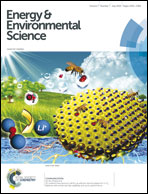A droplet-based screen for wavelength-dependent lipid production in algae†
Abstract
We report a digital microfluidic system designed for droplet-based long-term culture and analysis of algae. The system includes unique innovations relative to standard devices including an active reservoir structure to maintain homogeneous cell density, a customized device layout capable of controlling a wide range of different droplet volumes, vertical interconnects to collect spent reagents, detection zones compatible with parallel-scale optical measurements using a standard multiwell plate reader, and optimized features for droplet dispensing in parallel. The method allows for automated, multiplexed analysis with significant reductions in human intervention, representing a decrease from 600 pipette steps (for a conventional screen in multiwell plates) to fewer than 20 (for the new microfluidic technique). The system was applied to screen conditions favourable for lipid generation in the widely used algal model for biofuel production, Cyclotella cryptica. A dependence on illumination wavelength was observed, with the best conditions (representing a four-fold increase relative to control) comprising an alternation between yellow (∼580 nm) and blue (∼450 nm) illumination wavelengths. These effects were observed for both micro- and macro-scale cultures, and are consistent with a putative mechanism involving photooxidative stress. We propose that the microfluidic system described here is an attractive new screening tool with potential advantages for applications in renewable energy, biotechnology, materials science, and beyond.


 Please wait while we load your content...
Please wait while we load your content...